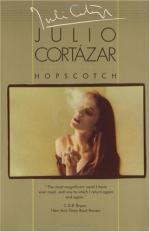|
This section contains 584 words (approx. 2 pages at 400 words per page) |

|
The 1950s served to introduce Cortazar to the reading public principally as a writer of stories characterized by frequent and unexpected encounters with the fantastic. In the 1960s, although he continued to write short stories, he suddenly turned to the novel as the genre most suitable for his expression. As Cortazar's vision of reality deepened, he required a form that offered more room for philosophical, social, and personal digression.
The transition from short story to novel is basically a broadening of the author's artistic vision to include humankind's philosophical questioning of his own destiny.
As the reader commences his journey into Cortazar's novelistic world, s/he is at once struck by the richness of the author's vast knowledge of literature, anthropology, philosophy, art, religion, music, and history. Accompanying this encyclopedic vision is his creative manner of constantly looking at life from different levels and perspectives.
The...
|
This section contains 584 words (approx. 2 pages at 400 words per page) |

|




